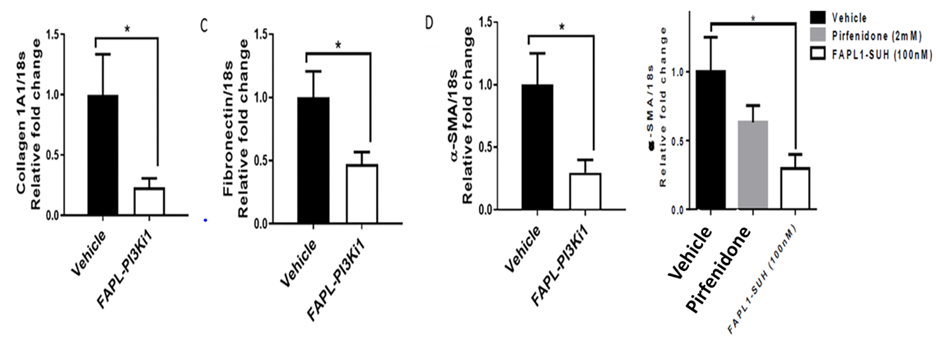Philip S. Low
Next Generation Targeted Therapeutics
Therapies for Fibrotic Diseases

In the study above, mice were infused intratracheally with bleomycin to induce pulmonary fibrosis and then at day 11 either left untreated or treated with a FAP-targeted PI-3-kinase inhibitor to suppress fibrosis. The Masson trichome staining for calogen demonstrates that the therapy suppressed the fibrosis.

In the lower study, freshly precision-cut human idiopathic pulmonary fibrosis lung slices were soaked in the same FAP-targeted PI-3-kinase inhibitor and examined for changes in markers of fibrosis. Noteworthy in the last panel is the fact that our FAP-targeted PI-3-kinase inhibitor reduced a major hallmark of fibrosis (α-smooth muscle actin) significantly better than the currently used antifibrotic drug, pirfenidone.